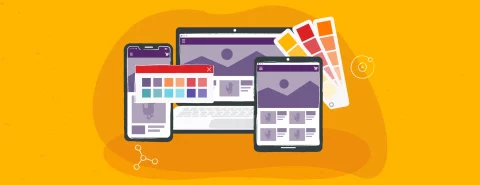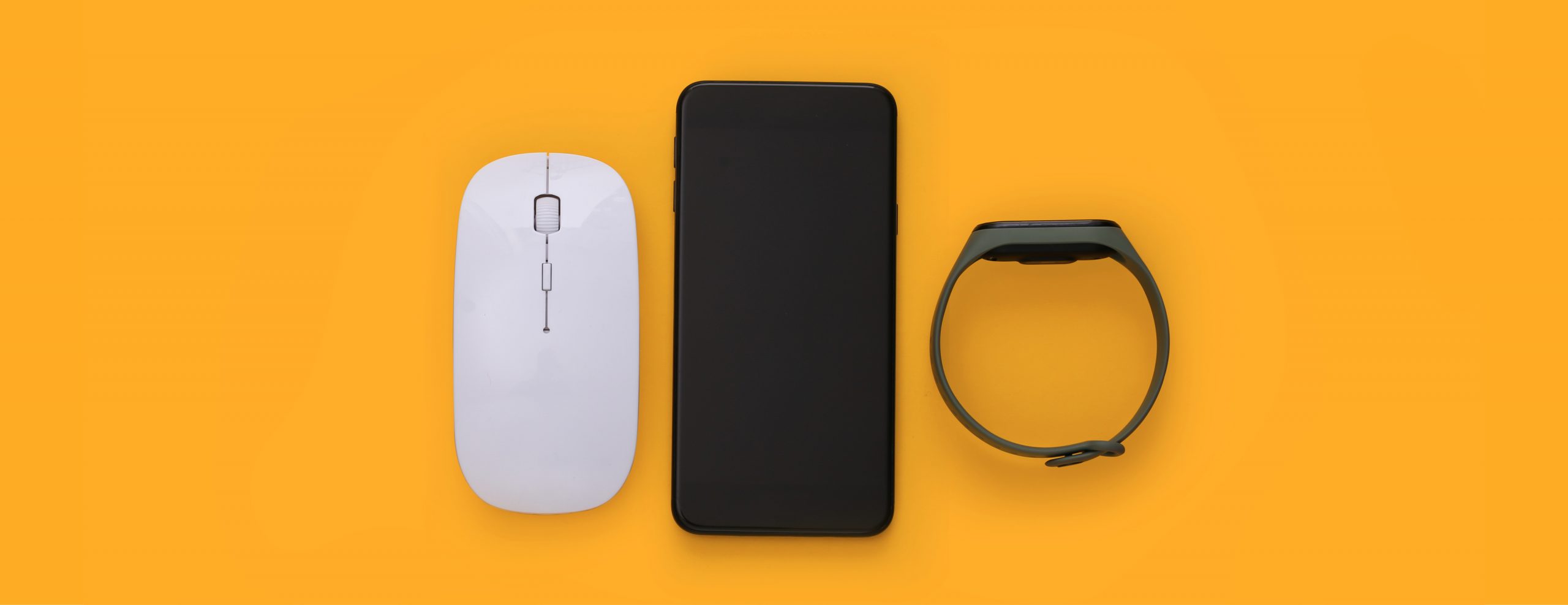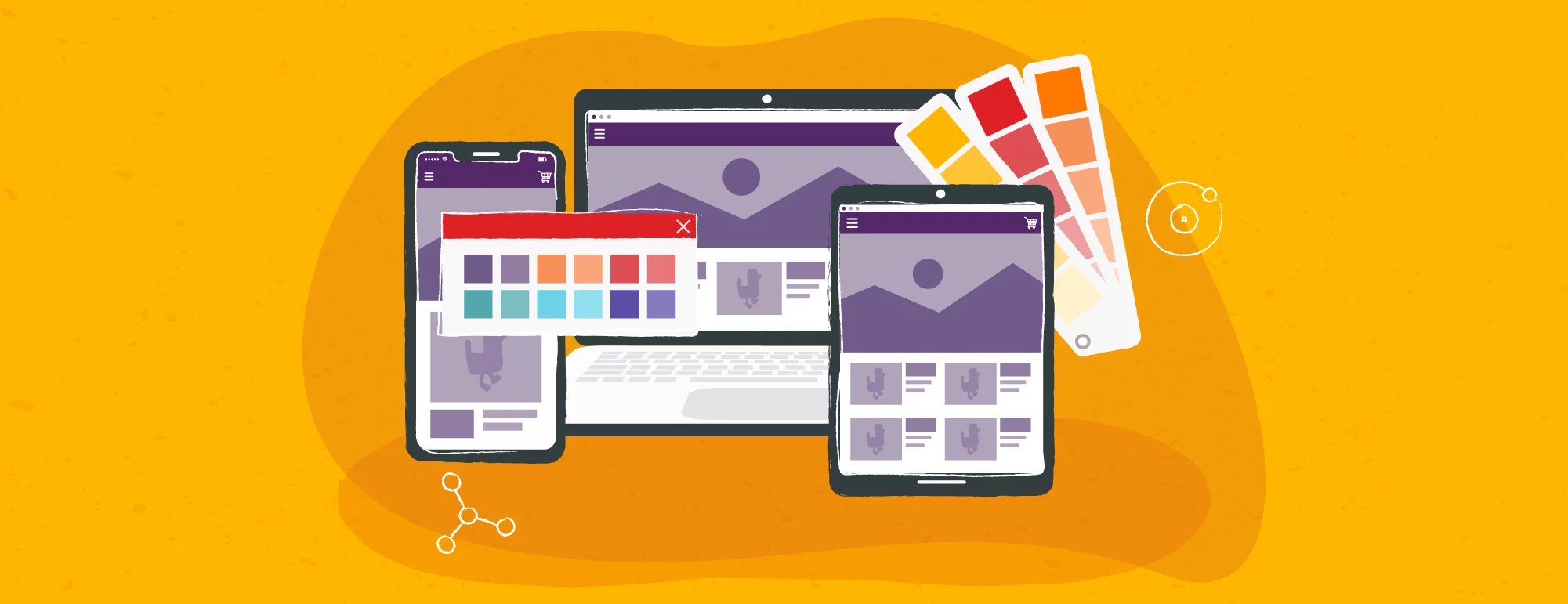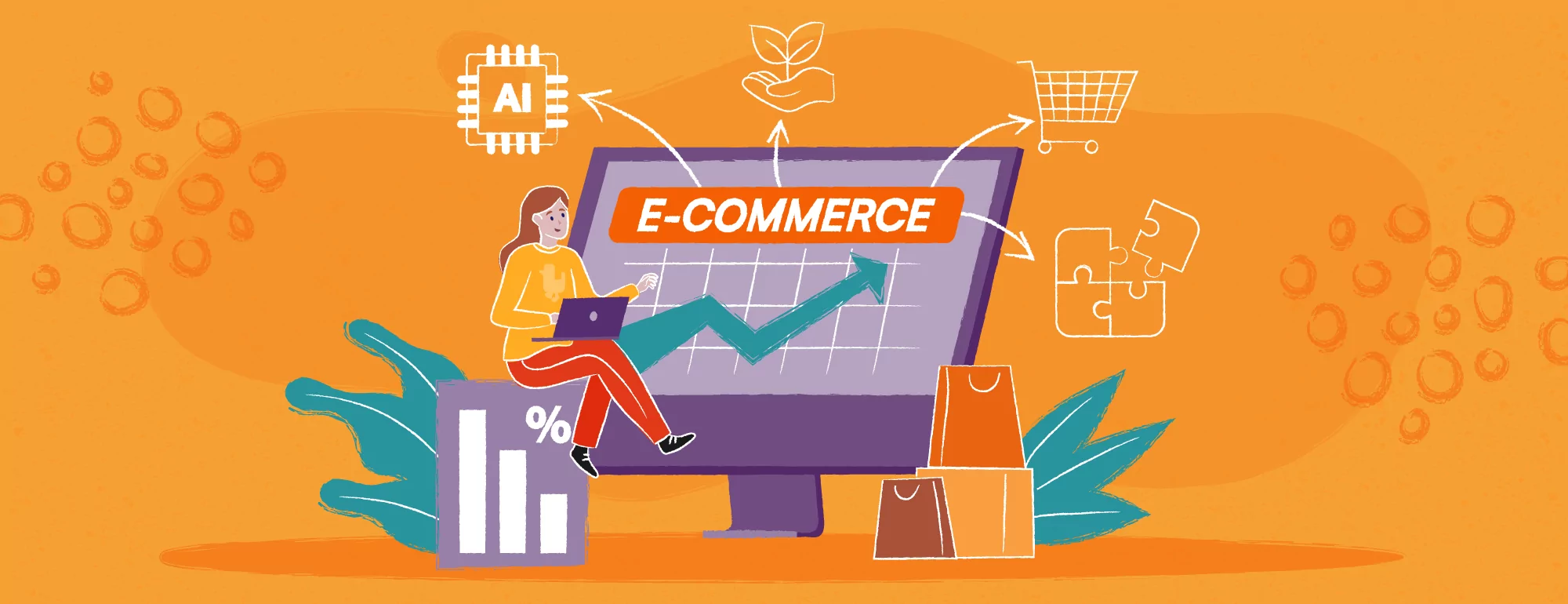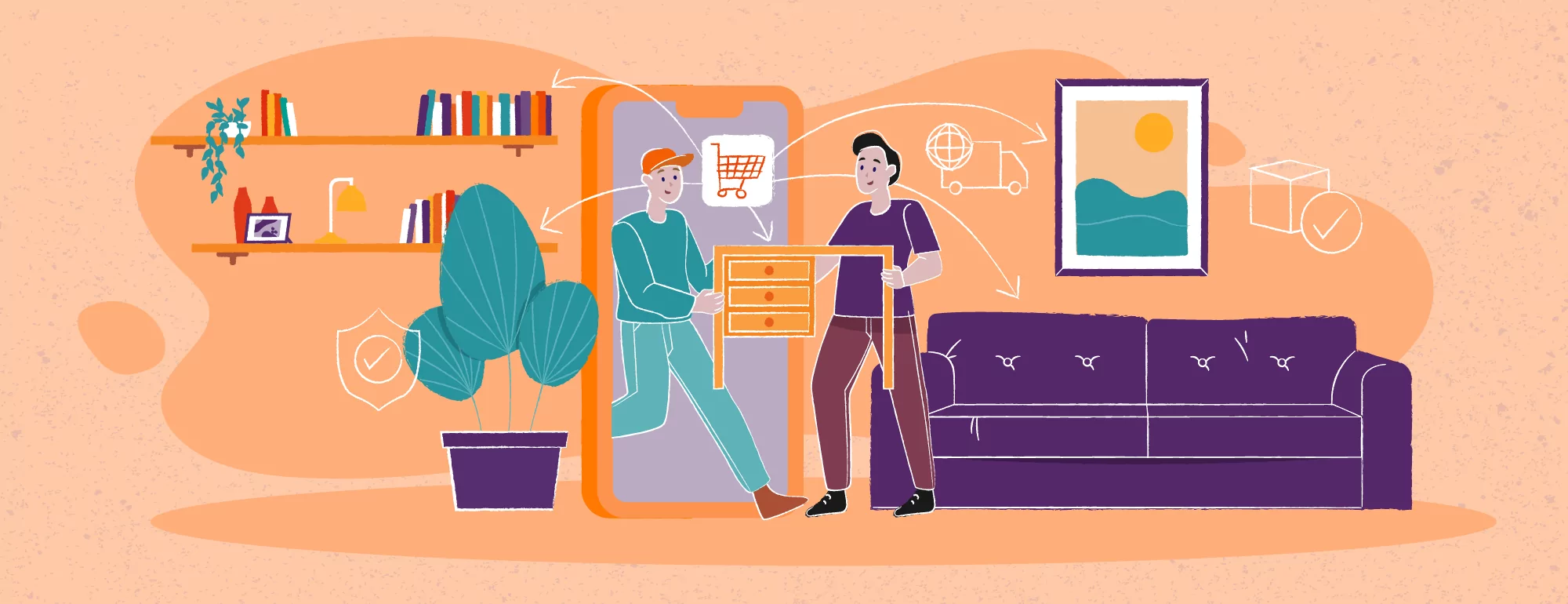Omnichannel vs Multiexperience / Getting Digital Customer Experience Right
The technology sector is full of buzzwords. You’ve got your clouds, your hyperautomation, your internet of behaviours… but one term that doesn’t arguably get heard enough is multiexperience.
That’s mostly because it’s very similar to omnichannel – but it’s not the same. And that difference is often vital if you’re looking to implement the best possible digital experience.
So, here’s a (mostly) tech-light explanation of omnichannel vs multiexperience and how it helps your business create the best digital customer journey.
Why Are We Bringing This Up?
A few years ago, research suggested the average person had somewhere between 3 and 4 devices. More updated figures from 2020 show the actual number could be anywhere between 7 and 10, with some key variation between countries.
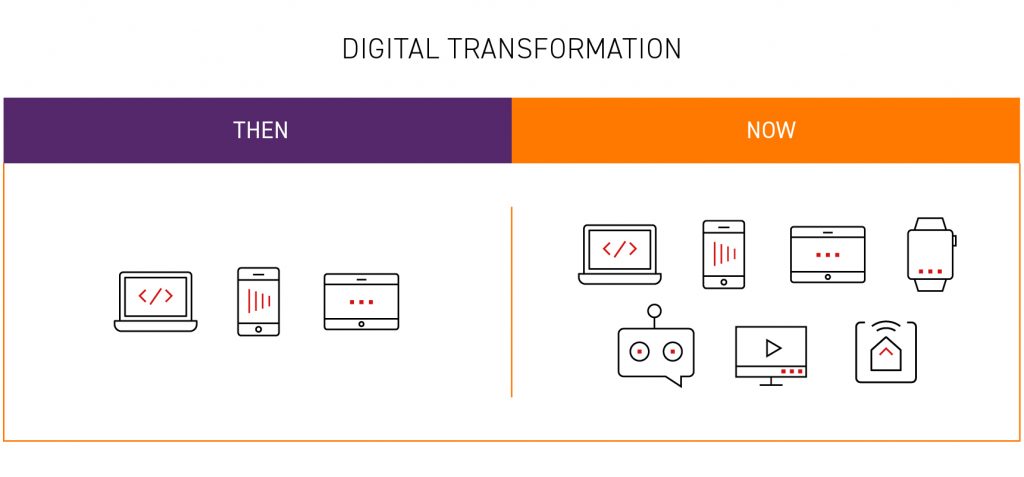
The question is no longer about if businesses should diversify their online presence, but rather how. There are two main bodies of thought here, the omnichannel and multiexperience approaches. But both share common goals, so let’s explore how each can help create the best digital customer journey.
Understanding the Digital Journey
The digital customer journey is not linear. The first points of contact can come from anywhere. People searching organically might land on your website, others might seek an app, and others yet might come across sponsored promotions or advertising. Data also often shows that it takes multiple touchpoints in a journey.
If these experiences don’t maintain the initial expectations, customers can become dissatisfied – especially if they hear about a competitor providing a much better experience*.
This also applies to existing clients.
Regular customers may prefer apps, custom web portals or something more secure. If these experiences don’t maintain the initial expectations, customers can become dissatisfied.
*Yes, we know people don’t sit around comparing every experience, but we’ve all tried to order from a buggy e-store, or had our friends complain about an outdated banking app. So, it does happen. We’re not delusional 😊
What is Omnichannel?
Marketers are already familiar with the “omni” concept: be everywhere, be consistent and maintain it. Omnichannel is the same: it’s about having a presence in every possible channel, whether its mobile, online or elsewhere (more about that later).
What is Multiexperience?
Multiexperience, however, is about providing a seamless digital experience across every platform or channel. If omnichannel is about having a website, a mobile app, a chatbot or even more advanced IoT integration, multiexperience is about connecting these together so users aren’t jumping out of one experience and into another, while still adapting your experience to each specific device or channel.
For example, look at the finance industry. Alongside physical stores, banks are investing heavily in both web portals and custom mobile applications. The average user is more and more interested in managing their accounts and payments at home or on the go. This in turn also opens the door for digital marketing and other branded interactions. Multiexperience development has helped the best banks adapt to changing user expectations.
So, Multiexperience vs Omnichannel?
Spoiler warning: we recommend multiexperience… when it makes sense. Every business is unique.
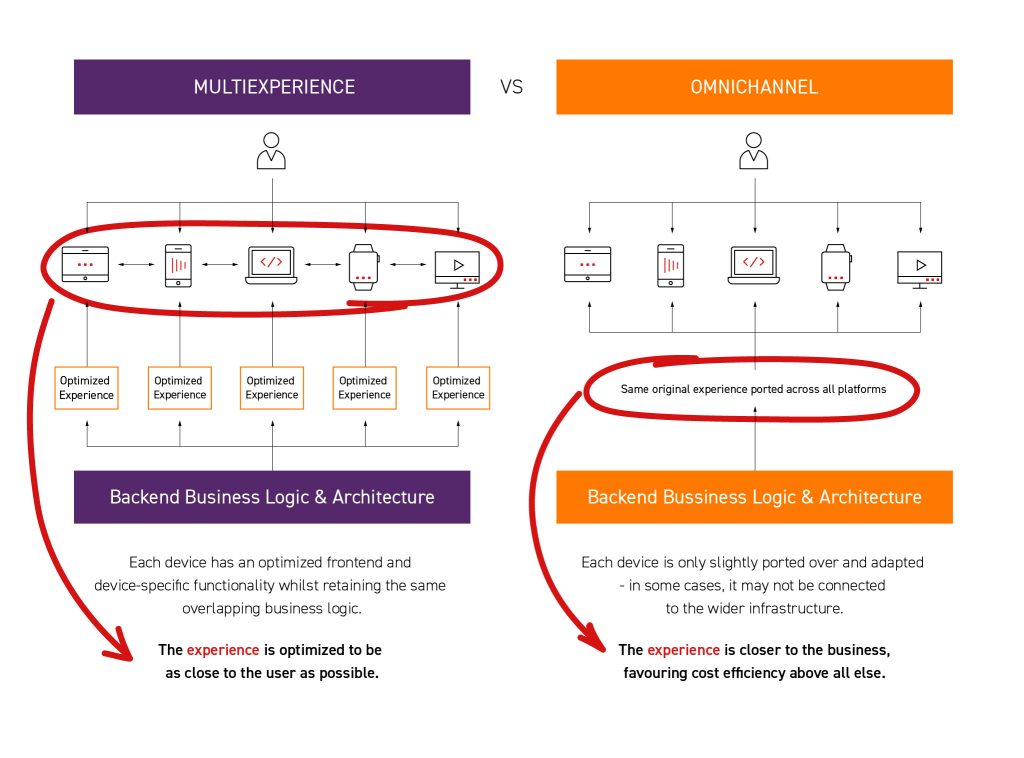
From a technical point of view, we recommend digital experience platforms – underlying backend platforms designed to adjust and adapt to the growing range of devices and channels out there – while, on the cheaper side of things, Headless CMS also works wonders. By decoupling the frontend and backend, a Headless CMS can push content where needed. Graphics, text, information and, of course, the brand, is seamlessly adapted and at no expense to your marketing team’s working hours!
(In fact, both Headless CMS and Digital Experience Platforms are examples of headless architecture but hey, we want to keep this as tech-light as possible. We’re trying 😊 )
The point is, with a multiexperience development approach, you build the foundations first and keep growing as necessary. There’s an initial investment that pays of rapidly over time – not only in costs, but also consistency, be it branding (frontend visuals) access to real-time information or even ensuring a consistently high user experience.
Seamless Digital Experience On Every Channel
So, assuming the best digital experience is one tailored to make the most of each platform, what are the actual channels that we’re talking about?
We know some of these may be obvious, but that doesn’t mean they should be overlooked!
Laptops and Desktops
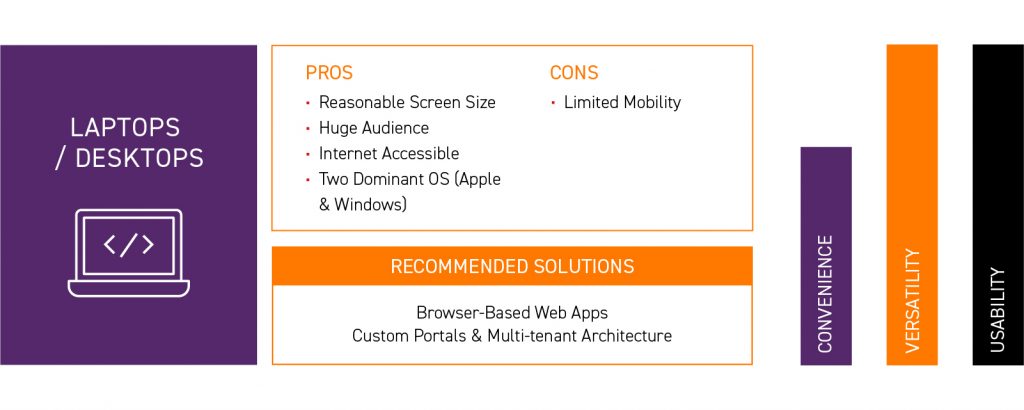
Most people still use laptops and desktop computers at home. While other devices are rapidly on the rise (hello, mobile!), it’d be crazy to dismiss traditional websites and desktop applications. This is why PWAs and other custom web portals are proving increasingly popular, as they’re able to provide a consistent experience across both mobile and desktops.
That said, there are still companies that need to adapt here. In recent times, companies that thrived on physical business now have to operate online. Senior shoppers are on the rise, for example, and pharmacies and other less-than-traditional e-businesses need to not only overcome their digital debt, but also adapt to audiences that are increasingly tech-savvy.
How to be unique? Well, you can’t. Sorry 😊 This isn’t the place to reinvent the wheel. A custom web portal can work wonders but, in all honest, it’s applying best practices and standards to ensure the best customer experience.
Smartphones
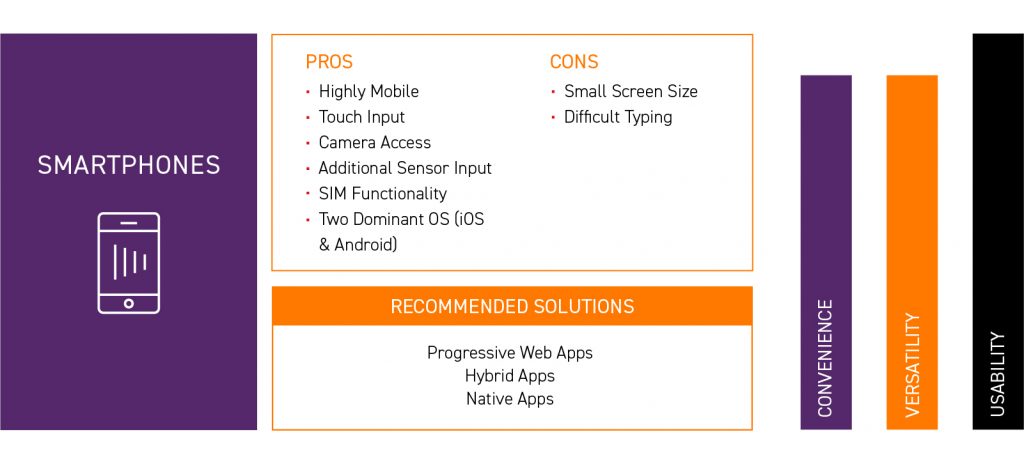
Mobile phones are everywhere. Data suggests that smartphone users will grow from 3.6 billion in 2020 to 4.3 billion in 2023. But even a little observation will show that people are always on their phone.
The main driver behind this is convenience. Even if you’re not the move, a smartphone fits in your pocket. For many people, it’s the #1 go-to option. If you provide a bad experience on mobile, people will simply give up rather than move to their laptop. Call it convenience or call it laziness, just don’t ignore its value (and impact) on your business.
How to be unique? With smartphones, there are a few options. For example, many e-commerce stores will use dedicated apps (typically a PWA connected to the web store) to add personalization for frequent and engaged users. Others may simply invest in adapting their website to be mobile as possible – the internet is Mobile-first these days, after all. But you can’t expect first time users to download an app when they simply want to browse.
Tablets
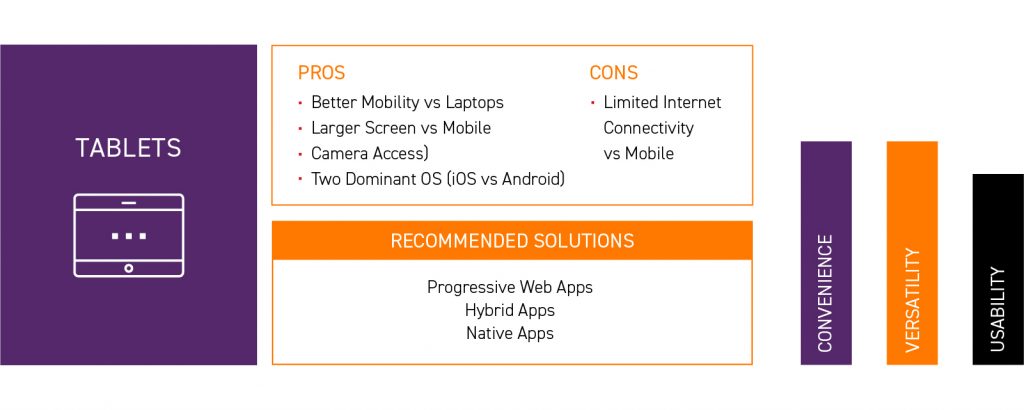
Tablets fill a weird and wonderful niche between mobile and desktop. They typically have the same operating systems as smartphones (Android and iOS) and therefore have the same app stores. A larger screen, likewise, makes them great for visuals.
That said, while they’re more portable than laptops and computers, they don’t have as many features (like calling) as smart phones. Yet their market position between old computers and modern smartphones has been well and truly carved.
How to be unique? Tablets run on the same operating systems as mobile devices, so it’s often easier to look at hybrid apps that are responsive – but it’s important to get the responsive aspect right.
The big thing about tablets, however, is that they don’t have a SIM card. As such, internet access can be limiting outside of Wi-Fi environments, along with GPS, geolocations and other functions. There’s a reason people don’t call an Uber from their iPad.
Smart TVs
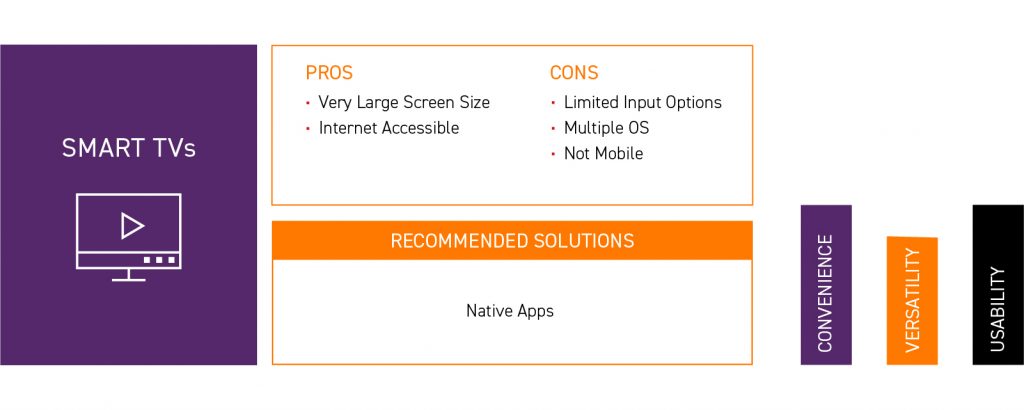
The biggest benefits of Smart TVs are the sheer display size. Naturally this is great for the likes of e-commerce, but it also means UX and UI can be more free. However, on the downside, most TVs aren’t known for their great control scheme. Large clear spacing etc is a must. After all, you’re asking users to navigate with a remote control. Keep it simple.
How to be unique? Smart TVs are primarily about one thing: convenience. If you’re using your TV, you’re not looking for something heavy-duty. Take Gartner’s multiexperience example of choice: Dominoes. The US pizza chain lets users order food from virtually anywhere, including via Smart TV app. It’s genius simplicity: watching a movie and get hungry? Just switch to the app and order without having to get up.
On the other hand, if you’re a law firm or production plant, do you really need a TV application? We highly doubt it.
Smart Hubs
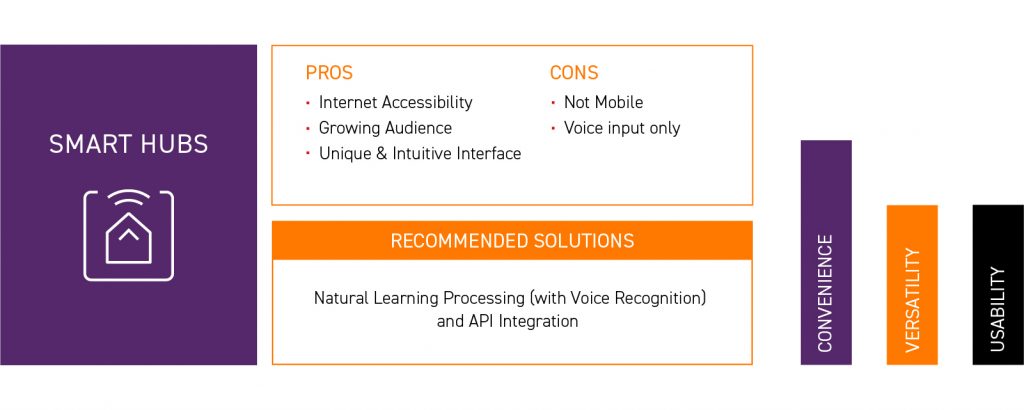
A relatively new sphere in IT, Amazon Alexa and Google Assistant (plus others) have made strong progress in recent years, gaining a following around the world. They take convenience in another direction. While phones and tablets work by being close at hand, these home hubs offer a completely hands-free experience.
However, these hubs represent the beginnings of the smart home experience. When users connect with other devices, such as smart phones, computers and TVs, such hubs become part of a greater, seamless digital experience. Time will tell how this developers but, if your services are very much based in the home (or that’s where data indicates your audience is interacting with your brand) it’s a platform to keep an eye on.
How to be unique? Smart hubs are unique by their very nature. You have to start with the NLP and voice recognition technologies of the platform – which you seldom do for any other channel. Other than that, it’s about providing an in-depth intuitive service: one that anticipates as many needs as possible and makes the process as effective as it can be. Asking Alexa questions is a lot like clicking on navigation: the more users need to do it, the more annoyed they are.
Wearables
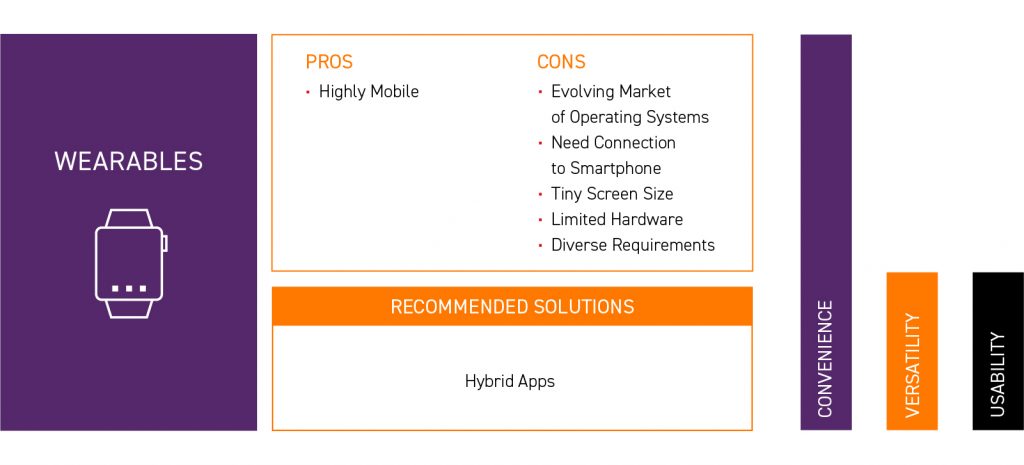
“Wearables” – the fancy term for an area that is mostly smart watches. This area is relatively novel, but there are a few niche uses that can help enhance user experiences.
How to be unique? Wearables aren’t unique by themselves – use them to enhance mobile operations. The screen is small land has next to no interface, so use it to display information more conveniently. In this way, it’s an extension of the frontend/UI more than anything else.
Chatbots and Third Party Interactions
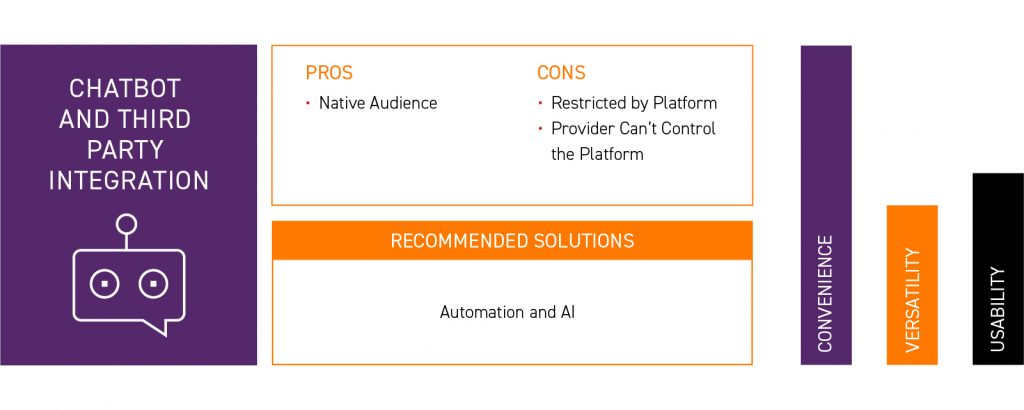
Third party platforms aren’t everyone’s first idea of brand engagement, but there’s one game-changing example: social media. After all, sometimes you need to go to where users are, rather than hoping they come to you.
Facebook is the predominant example here. Supplementing a profile with chat bots, for example, can ensure your customer service is operating 24/7 and offers a personalized experience for everyone. Yet this philosophy can be argued for any community/platform your audience uses prominently enough – like Slack, for example.
How to be unique? Third party integrations aren’t about being unique – it’s about being convenient. Put your service somewhere people already are and make it as effective as possible. If it’s something with a large audience base, then automation (ala chatbot AI) can be effective. However, never completely deny users the ability to talk to an individual. There will always be questions that automated scripts can’t answer.
And the Wider World of IoT?
Let’s be honest, the IoT market is huge. New devices spring up all the time and sometimes they coalesce into a stable platform – other times they don’t. And for each industry, you need to weigh up the needs.
Tier One. Desktop, Laptop, Tablet, Mobile. These are absolutely essential. They represent how the vast majority of people still interact. It’s how most business is done.
Tier Two. Smart Hubs, Smart TVs, Third Party Integrations. These are areas that are growing (although primarily in the B2C space) in popularity with users. While they’re not core channels, embracing some of these can make your business more convenient and potential reach a few extra people along the way.
Tier Three. Smart Watches, et al. These are “nice to haves” for most industries. Not many sectors have a reason to integrate with a smart fridge or watch for example. However, in some niche sectors they may be necessary. Invest with caution.
How to be unique? It’s not a question of “how” but “if”. With IoT, there are always new devices or channels for your business to be the first on – but that doesn’t mean you should rush in and plant a flag. The beauty of multiexperience is that the most essential components (i.e, business logic) are all in the backend and we’re able to expand to new devices and systems once they’ve proven a (potentially) worthwhile investment.
Digital Experience Innovation Isn’t as Scary as You Think
The truth is that digital experience transformation is more about customer transformation. Your users are adapting to a digital era. Your job is to respond in kind and be ready for them.

Let’s be pragmatic: your business can’t be everywhere straight away. It’s vital to prioritize the most essential channels first – and our money is on mobile and desktops – and expand outwards based on viability. This is where modern technology shines through.
With a digital experience strategy built around the multiexperience approach, we’re not adding separated interactions to a disjointed omnichannel strategy. Instead, we’re adding and growing a seamless digital experience.
